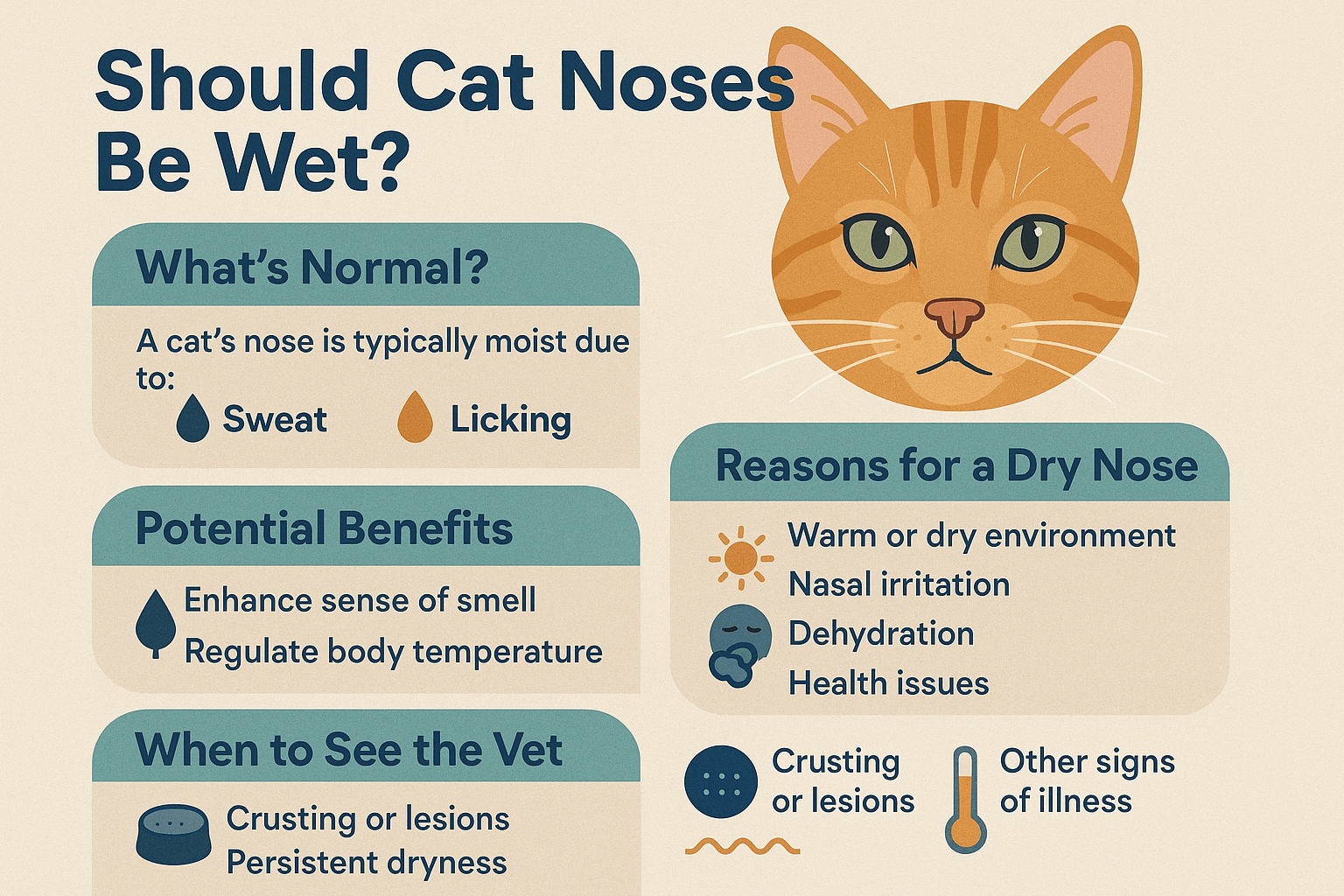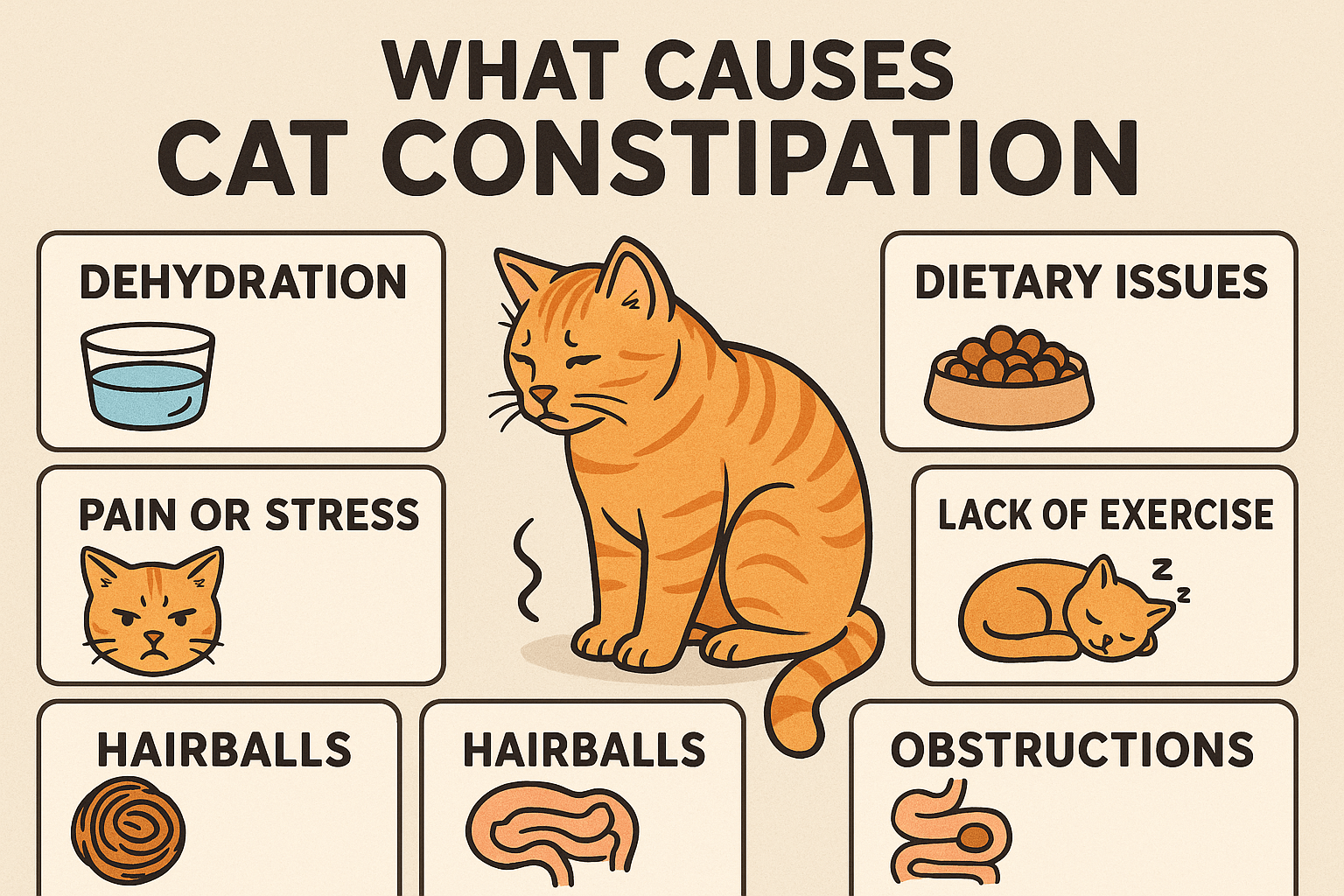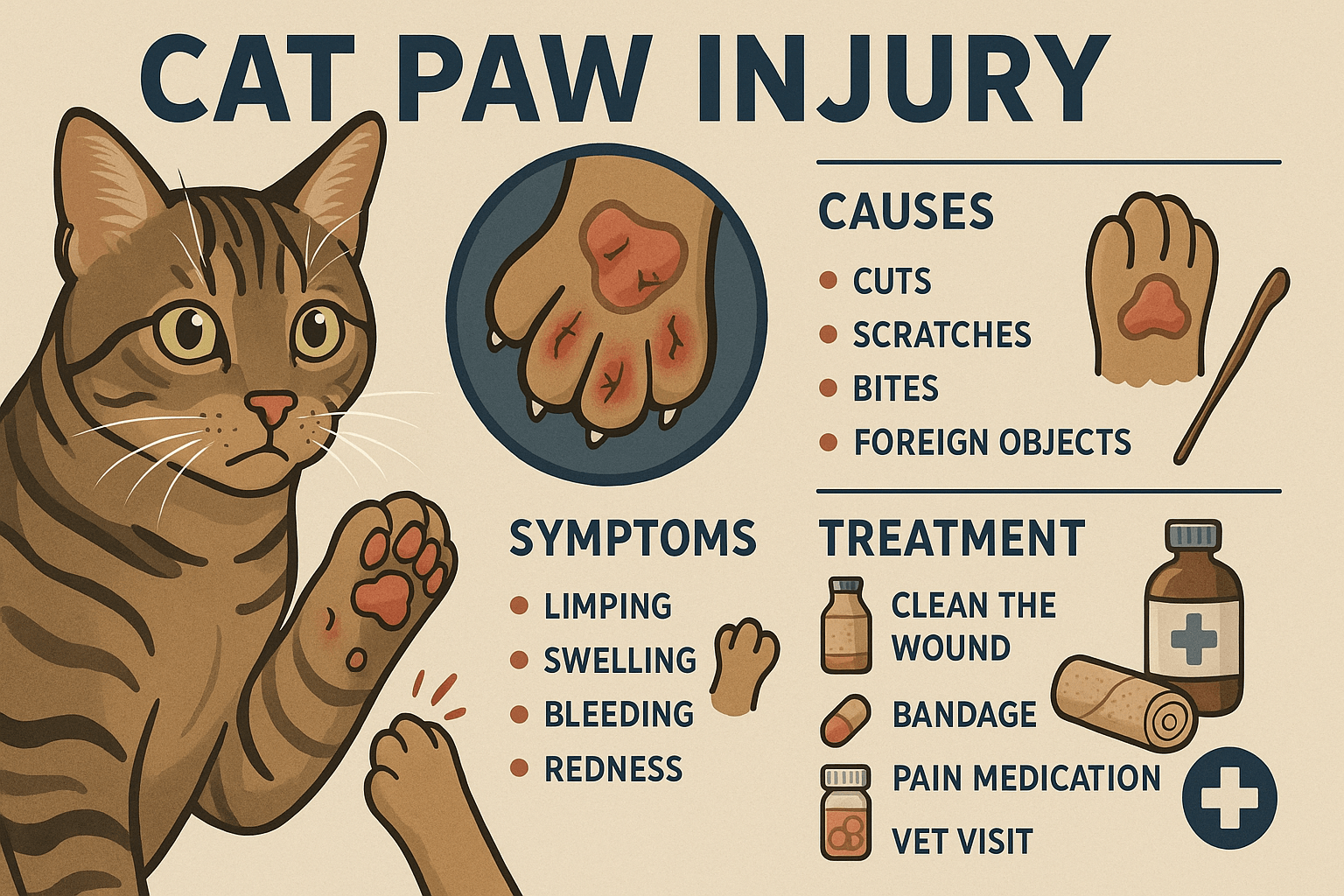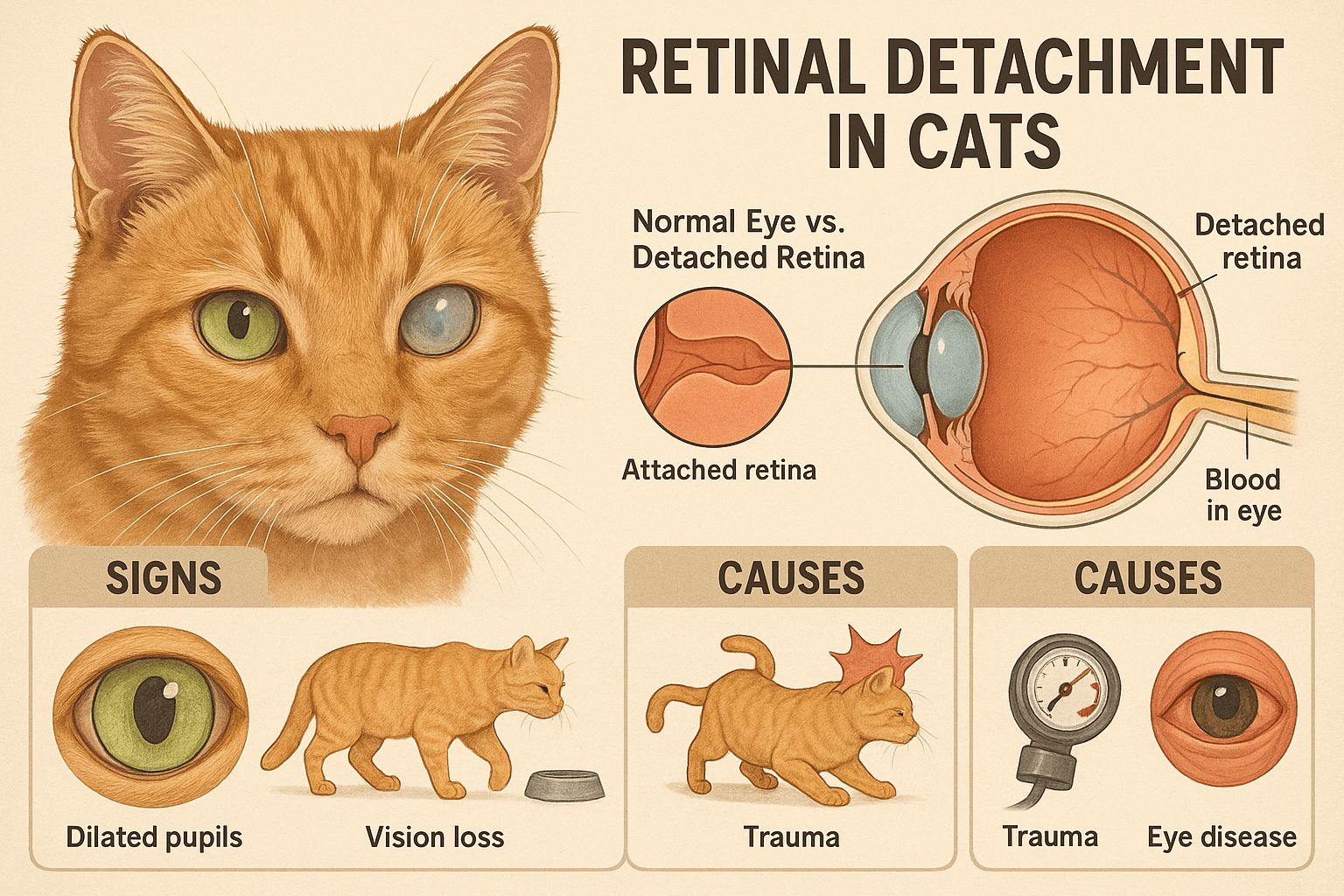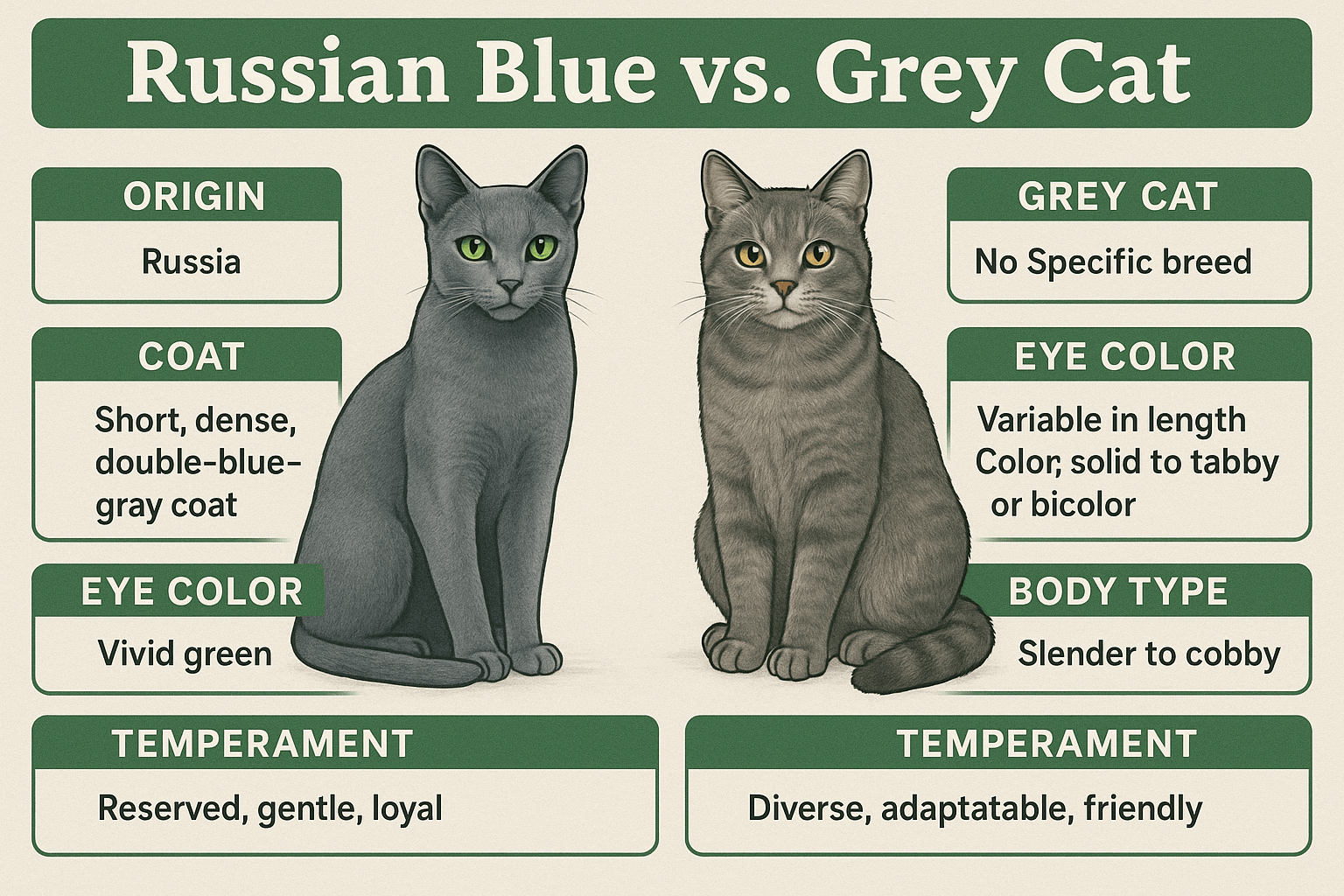Should Cat Noses Be Wet?
Cat owners often find themselves wondering about the health of their feline companions by observing small details, such as the texture and moisture of their noses. A common question that arises is whether a cat’s nose should be wet or dry. While a wet nose can sometimes indicate good hydration or normal behavior, it isn’t always a definitive sign of health. Similarly, a dry nose doesn’t necessarily mean something is wrong. Understanding what’s normal for your cat’s nose—and what might signal an issue—can help you better care for your furry friend. Let’s explore the facts behind this curious topic and provide clarity on what to look for when assessing your cat’s well-being.
What Does a Wet Nose Mean for Cats?
A wet nose in cats can be perfectly normal, but it’s important to understand the context and potential reasons behind it. Here are some insights into why your cat’s nose might feel damp.
Natural Moisture from Licking:
Cats frequently lick their noses to keep them clean, which can leave them feeling wet. This is a normal grooming behavior.Environmental Factors:
Humidity levels or exposure to water (e.g., after drinking) can temporarily make a cat’s nose wet.Cooling Mechanism:
Cats don’t sweat like humans do; instead, they may rely on evaporative cooling through their nose to regulate body temperature.Sign of Hydration:
A slightly moist nose can indicate that your cat is well-hydrated, though this isn’t a foolproof measure of overall health.Potential Health Indicators:
Excessive wetness, especially accompanied by discharge, could signal respiratory issues or infections that require veterinary attention.
While a wet nose is often harmless, paying attention to other symptoms ensures you catch any underlying problems early.

When Should You Worry About a Dry Nose?
A dry nose doesn’t automatically mean your cat is unwell, but there are certain scenarios where it might warrant concern. Here’s what to watch out for.
Dehydration Concerns:
If your cat’s dry nose is paired with lethargy, sunken eyes, or reduced skin elasticity, dehydration could be the culprit.Fever or Illness:
A warm, dry nose combined with other signs like lack of appetite or unusual behavior may indicate a fever or illness.Sunburn or Cracking:
Outdoor cats exposed to harsh sunlight may develop dry, cracked noses due to sunburn or environmental damage.Age-Related Changes:
Older cats may experience changes in nasal moisture as part of the natural aging process.Allergies or Irritants:
Exposure to allergens or irritants can cause temporary dryness or flakiness around the nose area.
Monitoring your cat’s overall demeanor alongside their nose condition helps determine whether further action is needed.
Check this guide 👉Understanding Cat Nose Fungus: Best 7 Health Tips!
Check this guide 👉Understanding Cat Nose Scabs: Best 7 Health Tips!
Check this guide 👉Cat Nose Bleed: Best 7 Expert Tips!
Signs of a Healthy Cat Nose | Potential Warning Signs |
|---|---|
Slightly moist or dry but smooth | Excessive wetness or constant dripping |
No visible cracks or sores | Cracked, scabbed, or irritated skin |
Normal color (pink or dark, depending on breed) | Discoloration or unusual spots |
Minimal clear discharge | Thick, yellow, or green discharge |
Consistent texture over time | Sudden changes in moisture or texture |
How to Maintain Your Cat’s Nose Health
Proper care and observation can go a long way in maintaining your cat’s nasal health. Here are some practical tips to ensure their nose stays in good condition.
Provide Fresh Water Daily:
Ensure your cat has access to clean, fresh water at all times to prevent dehydration.Monitor Environmental Conditions:
Avoid exposing your cat to extreme temperatures or low humidity, which can affect their nose’s moisture balance.Check Regularly for Changes:
Incorporate a quick nose check into your routine to spot any unusual textures, colors, or discharge early.Protect Outdoor Cats from Sunburn:
Use pet-safe sunscreen on light-colored or hairless cats to shield their noses from harmful UV rays.Consult Your Vet When Unsure:
If you notice persistent changes or symptoms, seek professional advice to rule out underlying health issues.
Taking these proactive steps ensures your cat’s nose—and overall health—remains in top shape.
Common Misconceptions About Cat Noses
There are many myths surrounding cat noses, leading to confusion among pet owners. Let’s debunk some of the most common misconceptions.
“A Wet Nose Always Means a Healthy Cat”:
While a wet nose can indicate hydration, it’s not a standalone indicator of health. Other factors matter more.“A Dry Nose Means My Cat Is Sick”:
Many healthy cats have dry noses, especially if they’ve been sleeping or lounging indoors.“Cats Need Constant Nose Moisturizing”:
Unlike humans, cats don’t require external moisturizers unless prescribed by a vet for specific conditions.“Nose Color Predicts Health Issues”:
Variations in nose color are usually breed-specific and rarely linked to illness unless accompanied by other symptoms.“Licking the Nose Is a Sign of Illness”:
Cats lick their noses as part of regular grooming—not necessarily because they’re unwell.
Understanding these truths helps dispel unnecessary worries and allows you to focus on real indicators of your cat’s health.
How to Recognize Nasal Problems Early
Detecting nasal issues early can prevent complications and ensure timely treatment. Look out for these warning signs that might indicate trouble.
Excessive Sneezing Fits:
Occasional sneezes are harmless, but frequent episodes could point to irritation or infection.Unusual Discharge Colors:
Yellow, green, or bloody discharge requires immediate veterinary evaluation.Difficulty Breathing:
Labored breathing or wheezing suggests possible blockages or respiratory distress.Loss of Appetite or Energy:
Nasal discomfort can lead to behavioral changes, including reluctance to eat or play.Swelling Around the Nose Area:
Inflammation or puffiness near the nose may indicate trauma or infection.
Early detection and intervention are crucial for resolving nasal problems before they worsen.
The Role of Nutrition in Nose Health
Diet plays a significant role in maintaining your cat’s overall health, including their nasal condition. Here’s how nutrition impacts nose wellness.
Hydration Through Wet Food:
Adding wet food to your cat’s diet boosts hydration, supporting nasal moisture levels.Essential Fatty Acids:
Omega-3 and omega-6 fatty acids promote healthy skin and reduce dryness or cracking.Balanced Diet for Immune Support:
Proper nutrition strengthens immunity, helping your cat fight off infections that affect the nose.Avoiding Allergenic Ingredients:
Some cats react poorly to certain ingredients, which can manifest as nasal irritation.Supplements for Senior Cats:
Aging cats benefit from joint and skin supplements that indirectly support nasal health.
Feeding your cat a balanced, nutrient-rich diet lays the foundation for lifelong nose health.
Seasonal Effects on Cat Noses
Seasonal changes can influence your cat’s nose condition, making it important to adapt your care routine accordingly.
Winter Dryness:
Cold air and indoor heating can dry out your cat’s nose; consider using a humidifier to combat this.Summer Heat:
Hot weather increases panting and evaporation, potentially drying out their nose faster.Springtime Allergies:
Pollen and other allergens may irritate your cat’s nasal passages, causing temporary dryness or discharge.Fall Mold Exposure:
Damp leaves and decaying vegetation can harbor mold spores, triggering nasal reactions in sensitive cats.Year-Round Monitoring:
Regardless of the season, consistently observing your cat’s nose helps identify seasonal patterns affecting their health.
By adapting to seasonal challenges, you can maintain your cat’s comfort and nasal well-being throughout the year.
Frequently Asked Questions About Cat Noses
Why does my cat’s nose feel cold?
A cold nose is typically normal and may result from evaporative cooling or recent grooming.
What causes a runny nose in cats?
Respiratory infections, allergies, or foreign objects can lead to nasal discharge. Consult a vet if it persists.
Can I use human lotions on my cat’s nose?
No, human products can irritate your cat’s sensitive skin. Use only vet-approved treatments if necessary.
Is sneezing related to nose health?
Occasional sneezing is normal, but frequent or chronic sneezing could indicate an infection or allergy.
How often should I check my cat’s nose?
A quick daily check during cuddle time is sufficient to monitor for any abnormalities.
Understanding Your Cat’s Nose for Better Care
Your cat’s nose can offer valuable clues about their overall health, but it’s essential to interpret its condition in context rather than relying on isolated observations. Whether wet or dry, a healthy cat nose varies based on individual traits, environment, and behavior. By staying vigilant, addressing warning signs promptly, and providing proper care, you can ensure your feline companion remains happy and healthy. Remember, every cat is unique, and understanding their quirks—including those related to their noses—is key to fostering a strong bond and ensuring their well-being.
What Causes Cat Constipation? Best 7 Expert Tips! Discover common causes, symptoms, and solutions for cat constipation to keep your feline healthy and comfortable.
Cat Paw Injury: Best 7 Expert Tips! Discover essential advice on identifying, treating, and preventing cat paw injuries to keep your feline friend healthy and happy.
Retinal Detachment in Cats: Best 7 Expert Tips! Learn to identify symptoms, understand causes, and explore treatment options to protect your cat’s vision effectively.
Russian Blue vs Grey Cat: Best 7 Expert Tips! Discover key differences, unique traits, and expert advice to help you choose between a Russian Blue and a generic grey cat for your perfect feline companion.

